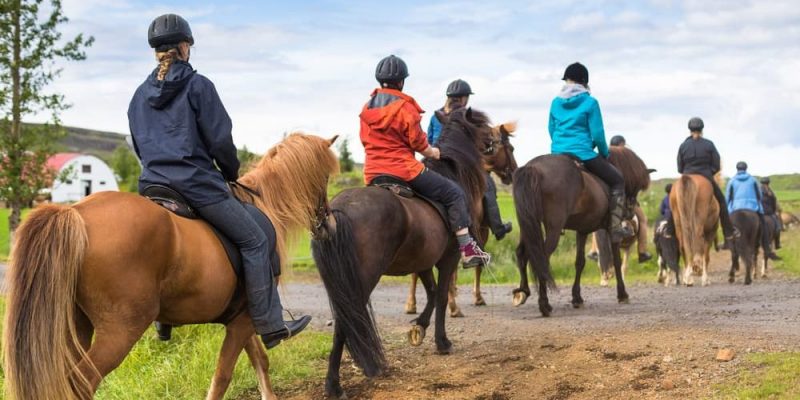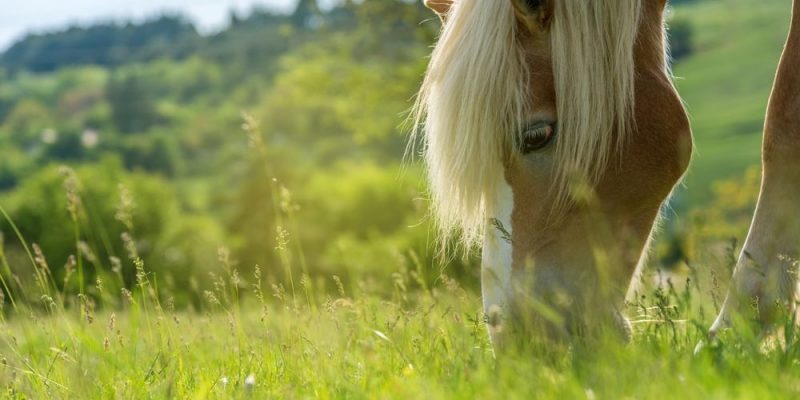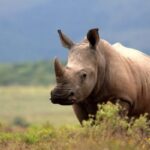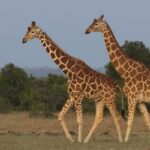We explain everything about horses, how they reproduce, what they eat and other characteristics. Also, their habitat and how long they live.

What are horses?
The horses are a species of herbivorous quadrupedal mammal of the equine family, which includes numerous different breeds (around 400), depending on their geographical origin, and which is among the first animals domesticated by humans.
Today's horses (and mares, their females) are evolutionary descendants of a species of small herbivorous mammal that existed in the Eocene, around 55 million years ago, known as Eohippus.
The first proper ancestor of horses was the Hyracotheriumthe first to increase its height to 115 cm and lose the toes on each leg, until it was left with just one, hardened one, until it became the current hooves that horses have at the end of each leg.
At some point in the Pleistocene, around 15,000 years ago, horses spread from North America to the rest of Eurasia and Africa, and subsequently became extinct in North America. That is why Its long history with humans begins around the year 3600 BC. c in the Kazakhstan region, when they were first domesticated and used as pack and transport animals.
Since then, the horse has been an integral part of human life. It has been used for agricultural, war and sporting purposes, and thanks to humans it once again inhabited all the geographies of the planet. For example, the horse returned to America from the Spanish conquistadors in the 15th century, after it became extinct in the region more than 10,000 years ago.
In culture, horses have been interpreted as a symbol of strength, purity and grace, and can be found in political, mythological and artistic representations of all kinds, from national emblems to religious stories.
Particularly famous are the centaurs of the Greco-Roman tradition, beings half man and half horse, and the famous flying horse, Pegasus. Another famous case is that of unicorns, European mythological beings that were horses with horns on their foreheads.
See also: Land animals
Horse characteristics

In general, horses are characterized by the following:
- are quadrupedal mammals whose size can vary significantly depending on the species, ranging between 143 and 183 cm in height, and 500 to 1000 kg in weight.
- There are hundreds of horse breeds known some of natural origin and others created by humans through selective breeding, but in general the breeds are classified into three types: heavy or draft horses, light or saddle horses, and pony horses and miniature breeds.
- have thirty-six teeth adapted to cutting grass and crushing it: incisors and molars. In the middle there is an empty space in which one to four vestigial (atrophied) teeth grow, which are normally removed from the horse to insert the bit or bit into the empty space.
- The horse's coat can vary in color and density significantly covering a variety of whites, browns, reds, blacks, chestnuts, grays and browns, with or without spots. In addition, they have a mane of hair behind the head and on the nape of the neck, and a long, hairy tail at the end of the body.
- are very sociable animals and have a varied temperament traditionally described as cold-blooded (calm), warm-blooded (agile but calm) and hot-blooded (nervous).
- can sleep for short periods standing up, but deep sleep is only achieved lying down something they do best in groups, since their instinct makes them always keep their guard in case a predator appears. This is why they are often made to sleep in groups or with pets, such as sheep.
Where do horses live?

Today, horses are part of the domestic species that accompany human beings in their populations especially rural ones. Therefore, its habitat has been adapted to humans to a large extent. It is estimated that there are 75 million horses in the entire world.
There are, however, populations of wild horses on different continents, gathered in herds of numerous specimens under the dominance of a stallion or alpha male, generally in prairies, pastures and bushes.
What do horses eat?

The horses are herbivorous animals, whose diet includes grasses, straw, hay, alfalfa and other plant fibers although in captivity they receive a very controlled and industrialized diet.
They have a fairly simple stomach, compared to the human, but also a much longer and more complex intestine, so an adult horse weighing 450 kg must eat around 7 to 11 kg of feed daily, and consume between 38 and 45 liters. water. Unlike humans, horses cannot vomit.
How do horses reproduce?

Like the rest of the mammals, horses they reproduce sexually and viviparously. At four years of age, the average horse reaches sexual maturity and the offspring are known as foals (males) and fillies (females). The pregnancy of horses lasts eleven months and in each birth a single calf is born.
How long do horses live?
The average lifespan of horses ranges between 25 and 40 years. Although they can live a few years longer in captivity, they can be ridden well into their 20s.
Continue with: Giraffe
References
- “Equus ferus caballus” on Wikipedia.
- “Horses” in National Geographic.
- “History of the horse” (video) on TvAgro (Colombia).
- “Evolution of the Horse” on BBC Bitesize.
- “Horse (mammmal)” in The Encyclopaedia Britannica.





